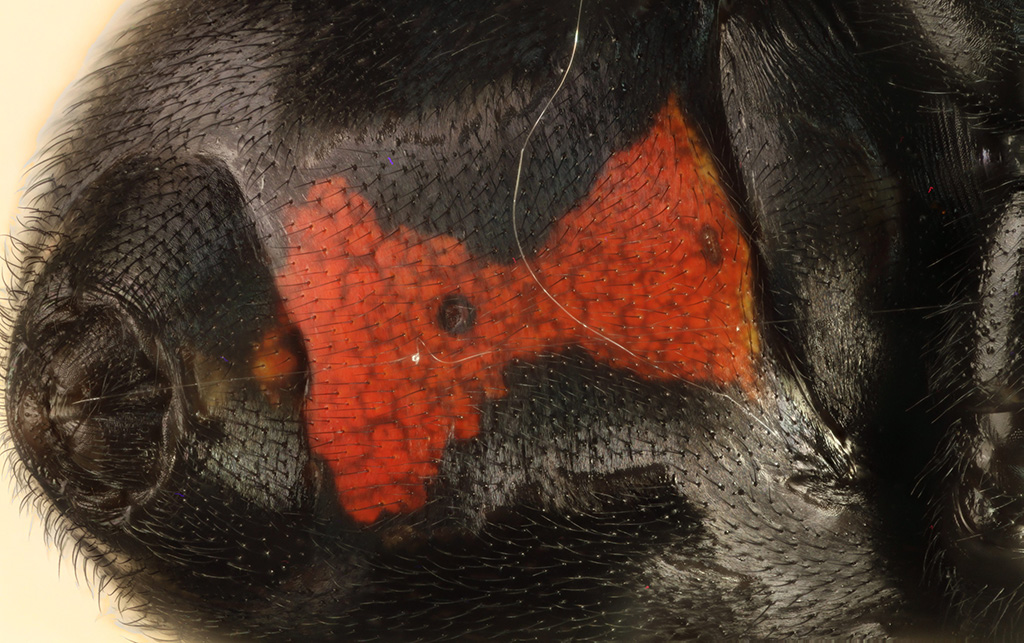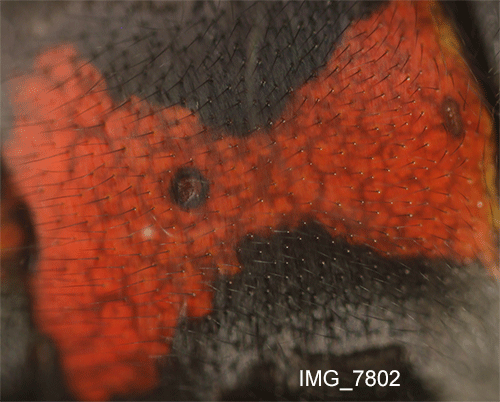
In this live animal, there is some irregular movement of the light blobs seen through the red hourglass. Here is an animation of two adjacent frames in the stack:

Background story is that I've always wanted to take a close look at the red hourglass pattern on a black widow spider. So, when this one set up shop just inside my garage door, I talked my wife into letting it stay there until the time was right.
Yesterday the time was right. I transferred the beast to a small plastic container, thinking only to confine it until I could figure out how to photograph it live. To my great good fortune, the spider chose to spin her web right at the top of the bottom section of the box, then finished the gift by positioning herself upside down and sitting still long enough for me to take off the top section of the box, set up a stack, and shoot it.
Right after that, she got quite a bit less cooperative.
Here's an "after the shoot" snapshot. You'll notice that she's not positioned anywhere near the center of the objective. I'm just happy that she's still inside the box!

Getting back to the hourglass, it seems to be composed of a red window over some light-colored globules inside the abdomen. Apparently the globules sit just under the cuticle, since a stereo pair showed very well the hairs sticking up, but hardly any depth below the surface. So I skipped the usual stereo, but I got lucky enough to catch some internal motion between two frames of the stack, which shows up pretty well in the animation.
Canon T1i camera, Mitutoyo M Plan Apo 5X NA 0.14 objective , Raynox DCR-150 tube lens, two Jansjo lamps diffused through kleenex tissue, ISO 100 at 1 second with EFSC, 119 frames at 0.02 mm focus step, shot by hand to avoid StackShot motor noise that I was afraid might spook the subject.
--Rik
Edit: to add explanation of the movement, and frame numbers to the animation.

